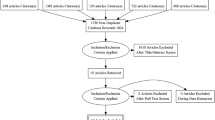Abstract
Purpose
Prospective protocol optimization, determination of image quality and diagnostic performance of virtual non-enhanced images (VNEI) derived from split-bolus dual-energy computed tomography (DECT) urography in patients with urinary stones.
Methods
IRB-approved, prospective study of 100 patients who, after written informed consent, underwent single-energy, non-enhanced CT and split-bolus, contrast-enhanced DECT (30 + 50 mL of contrast media; combined nephro-urographic acquisition). DECT was performed using setting A (80/140 kVp) in the first 20, and setting B (100/140 kVp) in the second 20 patients. Tin filtration was used in all patients. After a pre-analysis of VNEI quality, 60 additional patients were examined using setting B. Two readers qualitatively and quantitatively determined image quality of all weighted-average DECT images regarding urinary tract opacification (n = 100), and all VNEI regarding quality of iodine subtraction and urinary stone detection (n = 80). True nonenhanced (TNEI) images were the standard of reference for statistical analysis (inter-reader variability and diagnostic performance characteristics).
Results
The urinary tract was completely opacified in 94% (94/100) of patients. Iodine subtraction was improved (p < 0.01) and image noise of VNEI was lower (p < 0.05) in DECT setting B. On VNEI, 83% (86/104) of urinary stones were correctly identified and 17% (18/104) were missed. Stones missed (2.5 mm, 1–4) were significantly smaller than stones correctly identified (5 mm, 2–27; p < 0.001). Diagnostic accuracy was 98% on a per-renal-unit basis and 96% on a per-patient basis. Inter-reader agreements were excellent (κ = 0.91–1.00; ICC = 0.86–0.99).
Conclusions
Split-bolus DECT urography was technically feasible and quality of VNEI was improved with the 100/140 kVp setting. Detection of urinary stones <4 mm on VNEI was limited.





Similar content being viewed by others
References
Royal SA, Slovis TL, Kushner DC, et al. (2000) Hematuria. American College of Radiology. ACR Appropriateness Criteria. Radiology 215(Suppl):841–846
Van Der Molen AJ, Cowan NC, Mueller-Lisse UG, et al. (2008) CT urography: definition, indications and techniques. A guideline for clinical practice. Eur Radiol 18:4–17
Chow LC, Kwan SW, Olcott EW, Sommer G (2007) Split-bolus MDCT urography with synchronous nephrographic and excretory phase enhancement. AJR Am J Roentgenol 189:314–322
Dillman JR, Caoili EM, Cohan RH, et al. (2007) Comparison of urinary tract distension and opacification using single-bolus 3-phase vs split-bolus 2-phase multidetector row CT urography. J Comput Assist Tomogr 31:750–757
Kekelidze M, Dwarkasing RS, Dijkshoorn ML, et al. (2010) Kidney and urinary tract imaging: triple-bolus multidetector CT urography as a one-stop shop—protocol design, opacification, and image quality analysis. Radiology 255:508–516
Maheshwari E, O’Malley ME, Ghai S, Staunton M, Massey C (2010) Split-bolus MDCT urography: upper tract opacification and performance for upper tract tumors in patients with hematuria. AJR Am J Roentgenol 194:453–458
Sanyal R, Deshmukh A, Singh Sheorain V, Taori K (2007) CT urography: a comparison of strategies for upper urinary tract opacification. Eur Radiol 17:1262–1266
Zamboni GA, Romero JY, Raptopoulos VD (2010) Combined vascular-excretory phase MDCT angiography in the preoperative evaluation of renal donors. AJR Am J Roentgenol 194:145–150
Mangold S, Thomas C, Fenchel M, et al. (2012) Virtual nonenhanced dual-energy CT urography with tin-filter technology: determinants of detection of urinary calculi in the renal collecting system. Radiology 264:119–125
Takahashi N, Vrtiska TJ, Kawashima A, et al. (2010) Detectability of urinary stones on virtual nonenhanced images generated at pyelographic-phase dual-energy CT. Radiology 256:184–190
Takahashi N, Hartman RP, Vrtiska TJ, et al. (2008) Dual-energy CT iodine-subtraction virtual unenhanced technique to detect urinary stones in an iodine-filled collecting system: a phantom study. AJR Am J Roentgenol 190:1169–1173
Scheffel H, Stolzmann P, Frauenfelder T, et al. (2007) Dual-energy contrast-enhanced computed tomography for the detection of urinary stone disease. Invest Radiol 42:823–829
Takeuchi M, Kawai T, Ito M, et al. (2012) Split-bolus CT-urography using dual-energy CT: feasibility, image quality and dose reduction. Eur J Radiol 81:3160–3165
Levey AS, Stevens LA, Schmid CH, et al. (2009) A new equation to estimate glomerular filtration rate. Ann Intern Med 150:604–612
Stolzmann P, Leschka S, Scheffel H, et al. (2010) Characterization of urinary stones with dual-energy CT: improved differentiation using a tin filter. Invest Radiol 45:1–6
Author information
Authors and Affiliations
Corresponding author
Rights and permissions
About this article
Cite this article
Karlo, C.A., Gnannt, R., Winklehner, A. et al. Split-bolus dual-energy CT urography: protocol optimization and diagnostic performance for the detection of urinary stones. Abdom Imaging 38, 1136–1143 (2013). https://doi.org/10.1007/s00261-013-9992-9
Published:
Issue Date:
DOI: https://doi.org/10.1007/s00261-013-9992-9




